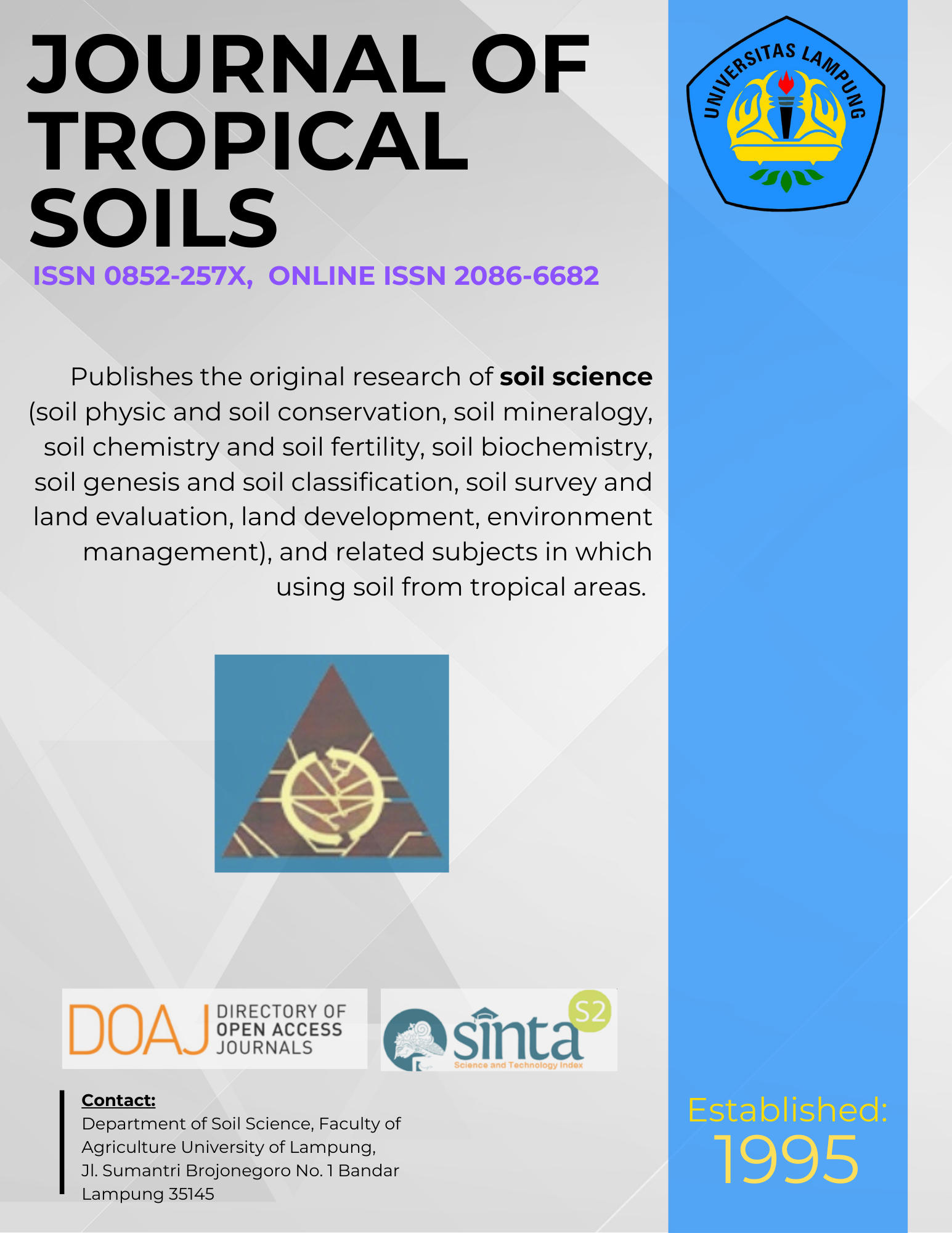Solubility of Rock Phosphate and its Effect to the Growth and Yield of Maize on Ultisols
Main Article Content
Abstract
Phosphor is a macro nutrients and it becomes the main limiting factor for maize growth on Ultisols. Rock phosphate is one of P fertilizer sources contains high P and Ca content, slow release and soluble under acid condition, suitable for acid soil. The objective of this research is to study the solubility of rock phosphate and its influence to the growth and yield of maize on Ultisols. This research was conducted in the research laboratory and the green house of Indonesia Soil Research Institute (ISRI). Ultisols soil samples were taken from oil palm plantation in North Sumatera. Christmas Island Rock Phosphate (CIRP) and Tunisia rock phosphate was used in this research. There are two activity conducted simultaneously, which is application of rock phosphate on Ultisols under plant indicator and without plant. The experimental design is randomized complete block design with 5 treatments and 3 replications. The pot experiment without plant was conducted using1 kg of soil sample mixed with rock phosphate treatment and placed into plastic plot. During 3 months of incubation, soil water content was maintained under field capacity by aquadest. The dosages of P fertilizer were 0, 157.6 and 315.2 kg P2O5 ha-1. Soil samples were taken on 1, 2, and 3 months after P fertilization for measuring pH, P content (by HCl 25 %, Bray 1 and Olsen extraction), P-inorganic fractionation (Al-P, Fe-P, Rs-P and Ca-P), exchangeable acidity (Al and H), Al and free of Fe oxide. The pot experiments with maize were conducted using 7.5 kg soil samples mixed with 2 different rock phosphates as a treatment. The dosages of rock phosphate were similar with experiment 1. Urea 300 kg and 150 kg KCl ha1 were applied as a basal fertilizer. Maize was planted two seed per pot and maintain until harvest time. The result of the research shows that soil P content increase with RP application, Tunisia rock phosphate give higher response than the CIRP. Direct application of rock phosphate with Fe and Al content did not increase significantly the Aldd, Al2O3 and Fe2O3 content on soil. Application of CIRP and Tunisia rock phosphate increased maize growth and yield significantly.
Downloads
Article Details
Section
License for Authors
Authors who publish with this journal agree to the following terms:
- Authors retain copyright and grant the journal right of first publication with the work simultaneously licensed under a Creative Commons Attribution License that allows others to share the work with an acknowledgement of the work's authorship and initial publication in this journal.
- Authors are able to enter into separate, additional contractual arrangements for the non-exclusive distribution of the journal's published version of the work (e.g., post it to an institutional repository or publish it in a book), with an acknowledgement of its initial publication in this journal.
- Authors are permitted and encouraged to post their work online (e.g., in institutional repositories or on their website) prior to and during the submission process, as it can lead to productive exchanges, as well as earlier and greater citation of published work (See The Effect of Open Access).
License for Regular Users
Other regular users who want to cite, distribute, remix, tweak, and build upon author’s works, even for commercial purposes, should acknowledge the work’s authorship and initial publication in this journal, licensed under a Creative Commons Attribution License.

